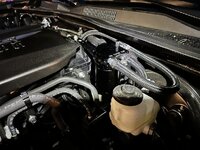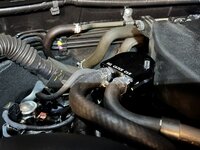Interesting.
What's the vehicle application for this engine?
*************************
I would concur that % of success will be application specific. Some vehicles will benefit greatly from a catch-can. Others may benefit to a lesser degree. Some others, not much at all. The following affects how much a catch-can may aid overall:
- fuel system (DI only? PF only? DI+PF?)
- PVC system design
- Lube NOACK score
Some vehicles have very good PCV recovery systems; some don't. I recently got a MX-5 ND2. I bought a very nice, high-end catch can system made specifically for the vehicle. (Looks OE when installed). Since I've put 6k miles on it, I've had nary a drop of oil collected. Apparently the PCV system in the MX-5 ND2 is very effective, and not letting many (any?) vapors escape the block-mounted PCV.
Also, oil choice has a LOT to do with this. The lower the NOACK value, the less it will vaporize and carry stuff into the intake system.
I'm running PUP in my MX-5; very good NOACK performance. And apparently the ND-2 engine PCV is very robust. Honestly, I wouldn't advise anyone else to put a catch-can on an ND-2; not really worth the investment.
My point is that we cannot say with absolute conviction that a catch-can is or is not needed, without understanding the application and lubes used.



